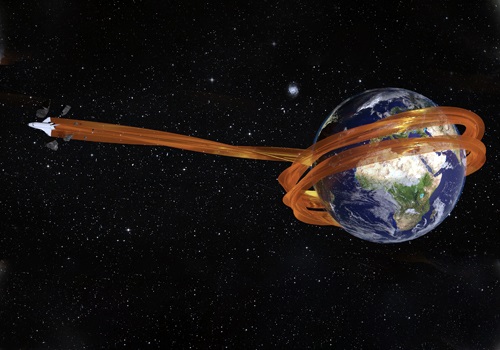While she was a mathematics student in Spain, eager to pursue a career in research, Silvia Sellán discovered an opportunity to join a summer undergraduate research program at the Fields Institute for Research in Mathematical Sciences in Toronto.
“I jumped at the chance,” she says. “I thought, I don't care what the project is, I'll do anything. I just want to do research.”
Sellán took part in the program, loved it and enrolled a second time, having found the trailhead for the career path she wanted.
“It helped that I fell in love with Canada, too!” she says.
Now a PhD student in the Faculty of Arts & Science’s Department of Computer Science, Sellán has been awarded the Dean’s Doctoral Excellence Scholarship.
The scholarship recognizes a student’s academic excellence and the impact of their research. It’s also given for an individual’s contributions toward colleagues and other students, and for the leadership they demonstrate outside of their research activities.
I’m excited that Silvia won the scholarship. But not surprised. She exemplifies the qualities that the scholarship rewards.
“It's a real honor and means a lot to me,” says Sellán. “I already consider myself lucky to get paid to do research. To be recognized on top of that makes me very happy.”
Alec Jacobson, an assistant professor in the Department of Computer Science, was Sellán’s supervisor at the Fields Institute and is her current supervisor.
“I’m excited that Silvia won the scholarship,” says Jacobson. “But not surprised. She exemplifies the qualities that the scholarship rewards.
“Silvia is deeply curious,” he says. “She participates actively at our conferences and symposia, frequently asking questions and arranging follow-up discussions with fellow researchers. She is discerning about which questions are interesting academically and which questions are important.”
Sellán’s research lies in a realm known as geometry processing, a subdiscipline of computer graphics that spans the three-dimensional real and digital worlds.

The field encompasses 3D digital effects found in countless films, from The Terminator to Toy Story to Tenet. It is a fundamental element of modern medical imaging, the video gaming industry, as well as design sectors of every stripe: architecture, engineering, automotive design, industrial design and more.
“You scan something with your phone and it becomes a model in your computer,” says Sellán about her field. “You transform that form with some algorithm, then print that model with a 3D printer.
“The blurring of those lines between the real and digital 3D worlds is what I'm most interested in.”
As a measure of her success in the field, Jacobson says, “It is rare, though not unheard of, for students to publish multiple first-authored papers in the same year at SIGGRAPH, the world’s largest computer graphics conference.
“It is exceptionally rare for a first-year PhD student. If it has happened before Silvia did it, I'm not aware of it.”
Sellán adds the Dean’s Doctoral Excellence Scholarship to a list of honours that includes a Vanier Canada Graduate Scholarship (NSERC).
Also, in 2020, she received the Beatrice “Trixie” Worsley Graduate Scholarship in Computer Science which is awarded to students in the PhD program in the Department of Computer Science who have helped promote women in the field.
The scholarship is named after the Faculty of Arts & Science alumna considered to be the first woman to earn a doctorate in computer science and Canada’s first female computer scientist.
The award recognized Sellán’s contributions to improving the representation of women in computer graphics and computer science. For example, she belongs to Women in Graphics Research (WIGRAPH), a computer graphics research team that holds events, supports networking and promotes research by women in the field.
Sellán also provides support to others by helping students with their graduate school applications.
“I try to help, not just women in computer science, but students from every underrepresented background,” she says. “There are some unwritten rules about how to get into grad school that aren’t widely known. My advisor explained those rules to me but there are many students who aren't as lucky as I am.”
Sellán would like to stay in academia, run her own lab and give to her own students what her supervisor provided her. She is definitely set on continuing on in her current field.
“I was studying math before,” she says. “And the idea I had of mathematical research is that every 50 years or so, someone would solve a theory or prove a theorem and the field would change. Then nothing would happen for another 50 years.
“That happens in geometry processing, too,” she says, “but in this work, it seems to happen every three months. It's a wild field to be a part of and I hope to stay in it forever.”
Three runners-up for the scholarship were also recognized with A&S Doctoral Excellence Scholarships. They are:

